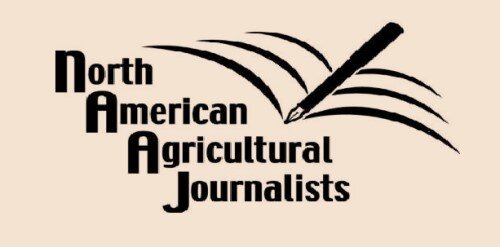Special Project Competition Winners
Category description: Unlike all other categories, entries in this category may include work from writers who are not NAAJ members. A special project entry takes reporting to a higher level. The overall entry shows careful planning and enterprise. The entry also shows that time, talent, and in some cases, monetary commitments were made to produce the project. May be a team effort. (Individual stories from this category by NAAJ members also may be entered in one of the single-story categories.) Number of entries: 18
“The strength of so many of these entries made the judging process extremely difficult. You have to be impressed with the scope of the work being done, and the range of news outlets that are doing that rigorous reporting.”
1st Place: Center for Public Integrity, Grist and The World
Joe Wertz, Jamie Smith Hopkins, Nathanael Johnson
‘Growing Food, Sowing Troubles’ — Fertilizer pollution
— Farming’s Growing Problem: Fertilizers are contaminating and warming the planet. Regulators haven’t acted on decades-old warnings — 1/22/2020
— Lake Erie turns toxic every summer. Officials aren’t cracking down on the source — 1/23/2020
— We’re not fixing this environmental crisis. One ditch in Indiana could provide a solution. — 1/30/2020
Judge’s comments: In clear and understandable prose, this series explains a major threat to our water supply and a contributing factor to climate change. While highlighting the widespread failure to confront the problem of over-fertilization, the series also shows an effective strategy being employed by one community.
2nd Place: Sky Chadde, Midwest Center for Investigative Reporting, and
Kyle Bagensose, Veronica Martinez Jaboco and Rachel Avon, USA Today
Toll of COVID-19 on meatpacking workers
— Tracking Covid-19’s impact on meatpacking workers and industry, 4/16/2020
— Cheap chicken, beef came at a cost. How American meat plants bred coronavirus hot spots, 5/22/2020
— ‘All smoke and mirrors’: How Trump’s meatpacking order has failed to keep workers safe, 6/18/2020
— ‘They think workers are like dogs.’ How pork plant execs sacrificed safety for profits, 11/11/2020
Judge’s comments: This series shows the failure — at all levels of government and within the industry itself -- to foresee the threat to workers in meatpacking plants, and to take effective action once the threat was clear. It also gives voice to the workers who risked their lives while working at essential tasks in the face of the pandemic.
3rd Place: Leah Douglas
Food & Environment
Reporting Network
Mapping Covid-19
— Mapping Covid-19 outbreaks in the food system, 4/22/2020
Judge’s comments: A remarkable compilation of statistics on the toll that coronavirus took on workers at all levels of the food system. Its widely cited statistics help drive public awareness of the problem. And the interactive graphic display was outstanding.
HONORABLE MENTIONS
— Jeff MacGregor, Smithsonian Magazine
It is here. And it is hungry: Can scientists stop the plague of the spotted lanternfly? 10/2020
Judge’s comments: This article tells a compelling human story while explaining a little-known threat to our nation's growers. It is an outstanding example of how to combine scientific content with its practical impact on people’s lives.
— Johnathan Hettinger, Midwest Center for Investigative Reporting
Dicamba on Trial — Daily coverage (archives)
Dicamba on trial: Internal docs show Monsanto, BASF prepared for drift complaints prior to dicamba launch, 1/27/2020
Dicamba on trial: Monsanto officials limited testing on its own plots, 1/31/2020
Dicamba on trial: Monsanto officials testified dicamba may drift, but not enough to harm crops, 1/31/2020
‘Buy it or else’: Inside Monsanto and BASF’s moves to force dicamba on farmers, 12/4/2020
Judge’s comments: I would also like to give honorable mention to Dicamba on Trial, which takes the reader inside the legal battle over a new system of genetically engineered seeds and weedkillers and the resulting damage to nearby crops.

